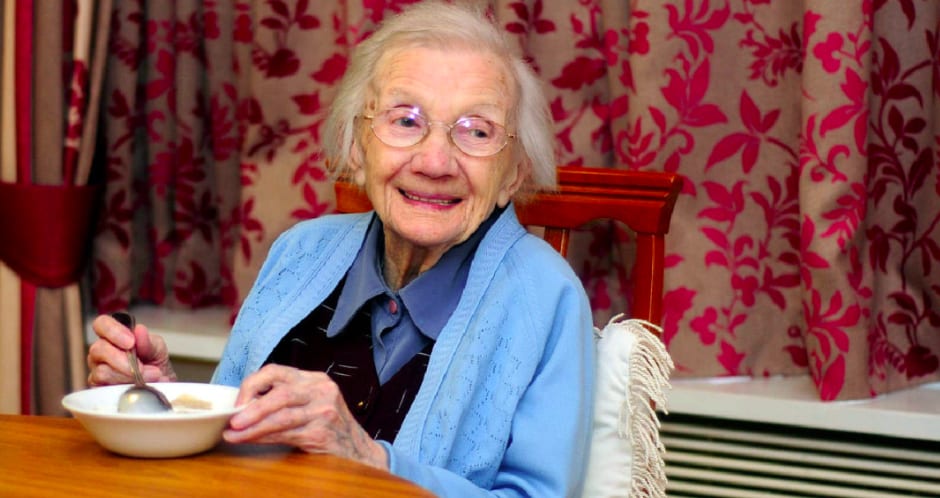
If you were told you had to give up most foods that you enjoyed eating, because there was a risk of choking, would you? Or would you want to keep eating solid foods, with the simple pleasures of eating food, even if the risk may actually potentially cause death?
That’s a choice that some people in aged care don’t get to make. It’s a controversial one too.
Many older people may have weak or absent teeth, some will find that the mucosal surfaces in the mouth and throat are less moist, while others will have a loss of muscle strength in the mouth and throat that will impair the swallowing and ability to consume foods.
These symptoms describe a medical condition called dysphagia, where a person has difficulty in swallowing solids or liquids. It is reported up to 65% of residents living in residential aged care have dysphagia.
So what happens when a person in aged care has trouble eating? On one hand they can either eat foods that are liquified, and possibly quite bland, but are safe and ensure that they still get a nutritious meal.
Or on the other, they can eat food the may be difficult for them to chew and swallow, against medical recommendation, at the risk of potentially choking. This could be something as simple and basic as toast.
All residents have the right of choice, though this choice and ‘dignity of risk’ must be well informed.
Aged care staff and medical professionals, such as speech pathologists, have a duty of care in supporting the resident’s choice by proving person centered information to residents and their families.
Ensuring residents have made an informed choice about the foods and fluids they wish to consume is more than simply stating, “I understand the risks”.
When making choices that made be against medical orders, clear documentation of the decisions made is essential.
The risk management involved with residents who have dysphagia requires implementation and evaluation of strategies that minimise risk and ongoing evaluation of these strategies.
Limiting food and fluid choices for people with chewing a swallowing difficulties, can increase the risk of malnutrition, dehydration and social isolation. Which is why some people are calling for more choice in the food textures and fluid consistencies available in order to improve quality of life.
One research paper, which looked into preventable deaths in aged care found that, found that 8 per cent of “preventable” deaths were due to choking – that’s 261 cases of fatal choking between 2000 and 2013.
It was the second highest external cause of death in aged care after falling.
From an aged care perspective, they would want their residents to be safe. To not add to the statistic of “preventable” deaths. They look to use dysphagia management systems that are safe, resident centered and support staff.
No provider wants to be liable for a death that could have been avoided if they took precautions, even if it means giving them food they do not want.
But if the resident and their family agree that the resident can still certain foods, then it would not be the facility’s fault if they are simply following the wishes of the resident, would it?
According to the Australian Aged Care Quality Agency, dysphagia management procedures should include;
Identifying and screening for dysphagia early. Know the signs, symptoms and impact of cognitive ability on mealtimes. Refer to speech pathology if a resident is identified as having dysphagia.
There should be ongoing education to aged care staff, as well as kitchen and catering staff, on correct modified diet textures and modified fluids.
It’s essential that there is client centered decision-making, which is information about resident’s dysphagia and aspiration risk that is personal, accurate and evidence based.
It is imperative the information provided is understood, provided at the right time, to the right people, meaning the resident and their family, with the right team and in the right format (this could be video, written, verbal)
Implementation of recommendations, accurate communication of recommendations to resident, family, catering and care staff.
Evaluation of recommendations that is in compliance to Australian Standards for Texture Modified Foods and Fluids.
5
2
I care for my husband who has problems with his swallowing and I now thicken all of his drinks but I do not puree his food. I try to give him soft and moist food however he still can eat toast and toasted sandwiches. The food he gets when he goes into respite is mush. I believe he should have what he wants, within reason.There are foods to avoid but common sense has to be used. He can`t feed himself so someone is always with him when he is eating.